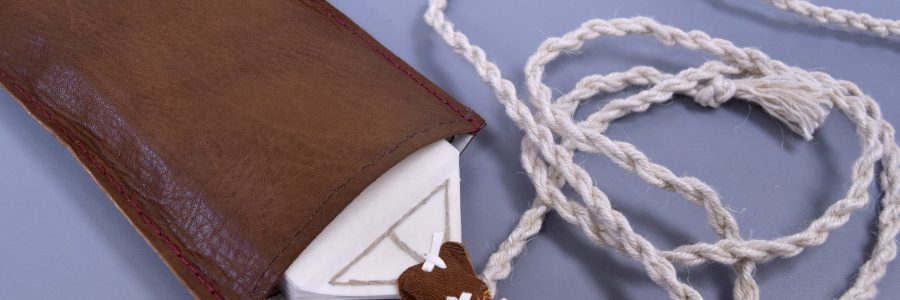
Curious Cures: the making of a medieval folded manuscript
This post is by Beckett Thornber, an MA Conservation Studies student, specialising in books and library materials, at West Dean College. He spent six weeks in the Conservation Department at Cambridge University Library as a Student Visitor, between February and April 2025.
The Curious Cures exhibition (running March-December 2025) features a comprehensive and fascinating selection of medieval manuscripts from both the University Library and other collections. One manuscript near the beginning of the exhibition (Cambridge, University Library, MS Add. 3303(3)) stands out from its fellows in format: it’s a single, gorgeously illuminated page that would once have been part of a larger folded manuscript, now conspicuously unfolded. Looking at it, flat in the case, it would be easy to miss that it was once part of an entire book of such pages, and hard to imagine that it might have been a practical, portable item used in the day-to-day life of a physician.
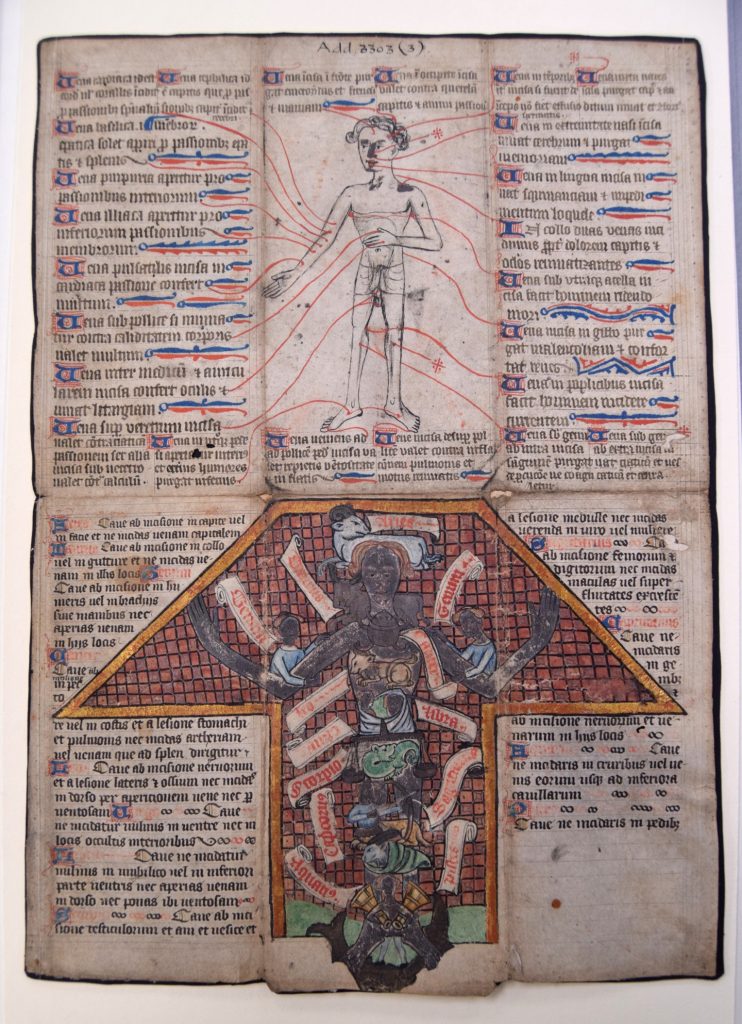
In preparation for the exhibition, I have been working alongside senior conservator Deborah Farndell in putting together a model of a late medieval folded manuscript. The model will be used during the Curious Cures exhibition as a teaching example, and will help visitors to visualise the original appearance and usage of the single loose page on display.
While Cambridge University Library doesn’t hold a complete folded manuscript in its collection, there are examples in other University of Cambridge collections. Deborah Farndell (Senior Conservator) and Kristine Rose-Beers (Head of Conservation and Heritage) visited one such example held at the Pepys Library in Magdelene College, Cambridge, and documented it. PL 1662 is a fragile, but beautifully intact, almanac dating to 1463–1481, and made in the region of Durham.[1] It is formed of 10 folded parchment leaves, and includes astronomical and medical information alongside images of lunar eclipses, urine flasks, and anatomical diagrams.
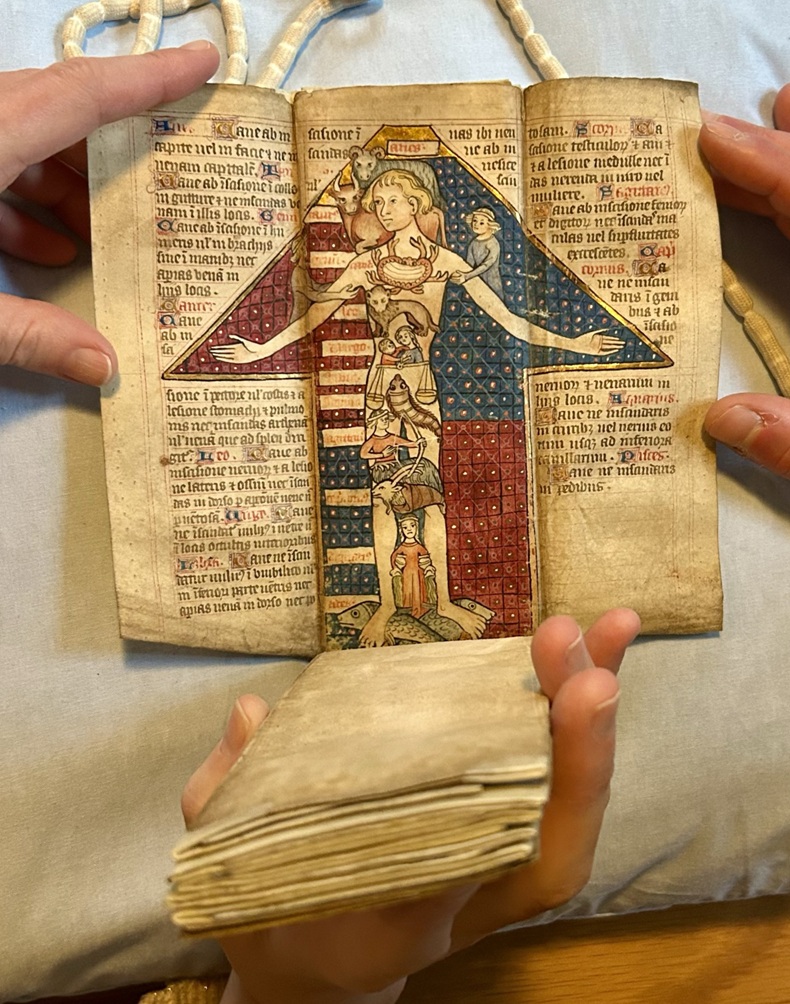
Surviving folding manuscripts, which date roughly to the late medieval period, are relatively rare. Their appearance can differ wildly between examples, with various forms of covering and attachment methods, although they tend to keep to the same general oblong format and folding pattern. They’re designed to hang upside down, likely from a belt, and the manuscript must be lifted and each sheet unfolded in order to be read.
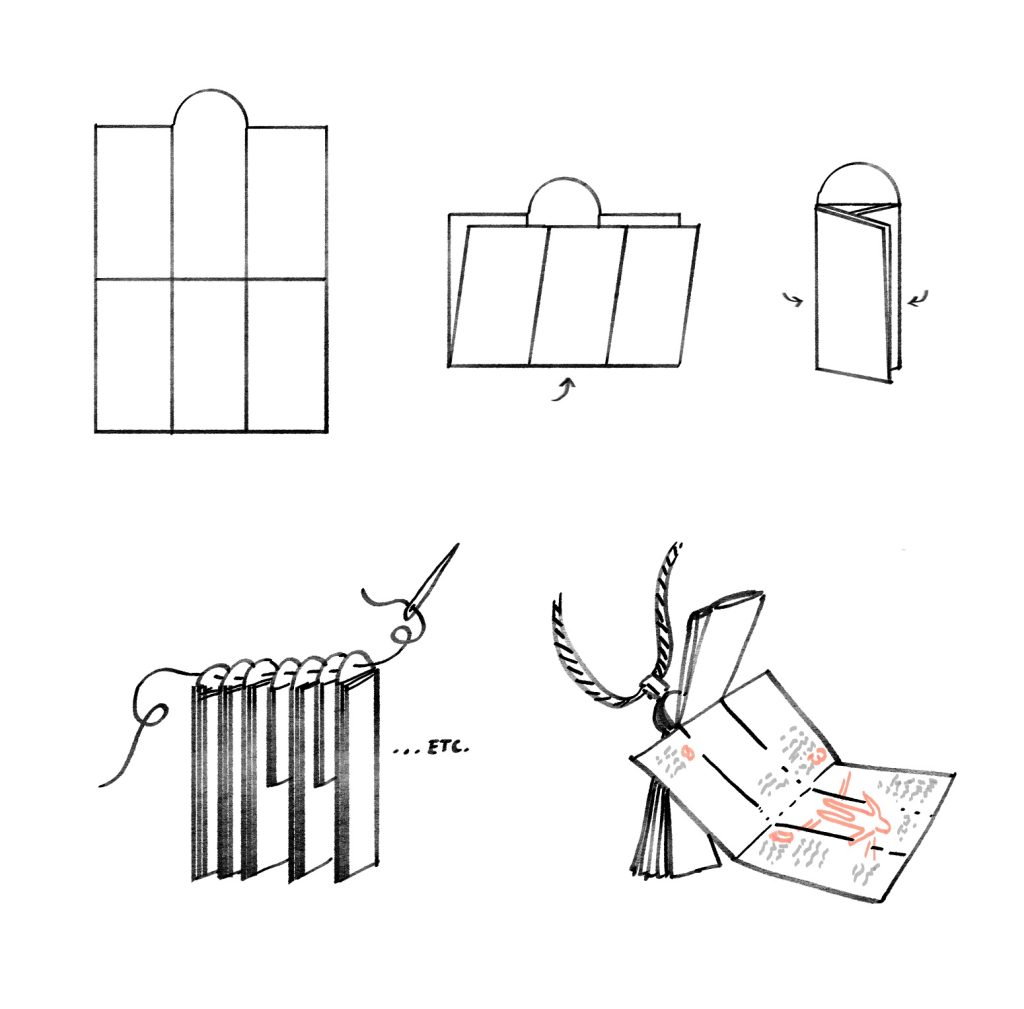
Making the manuscript: Figuring it out
When I began my placement, Deborah had already begun the construction of the folded manuscript, measuring, cutting, and folding the parchment pages that would create the main body, and placing the whole into a press to encourage the parchment to stay in its new shape. Parchment is a notoriously springy material, particularly when newly folded, so it needed to be clamped whenever the pages weren’t being actively manipulated to stop it pinwheeling wildly into the air!
My first task was to begin figuring out how PL 1662 was sewn together at the top and recreate it for the model. Shaun Thompson (Conservation Manager) had already suggested that a ‘stem stitch’[2] might be a likely suspect, and Deborah and I agreed that it looked very like the stitching seen on the original manuscript. To confirm this, I made a small sewing sample from a stack of paper, and tried out a couple of different stitching styles to compare them. The main problem with all of the stitches that I tried, including the stem stitch, was that they failed to create the twisted effect on both sides of the sample, as seen on PL 1662. This was solved by leaving a long tail after the first pass of stitching, which could then be wound back around the stitches on the untwisted side, achieving a very similar visual effect to the twisted stitching on the front of the sample.
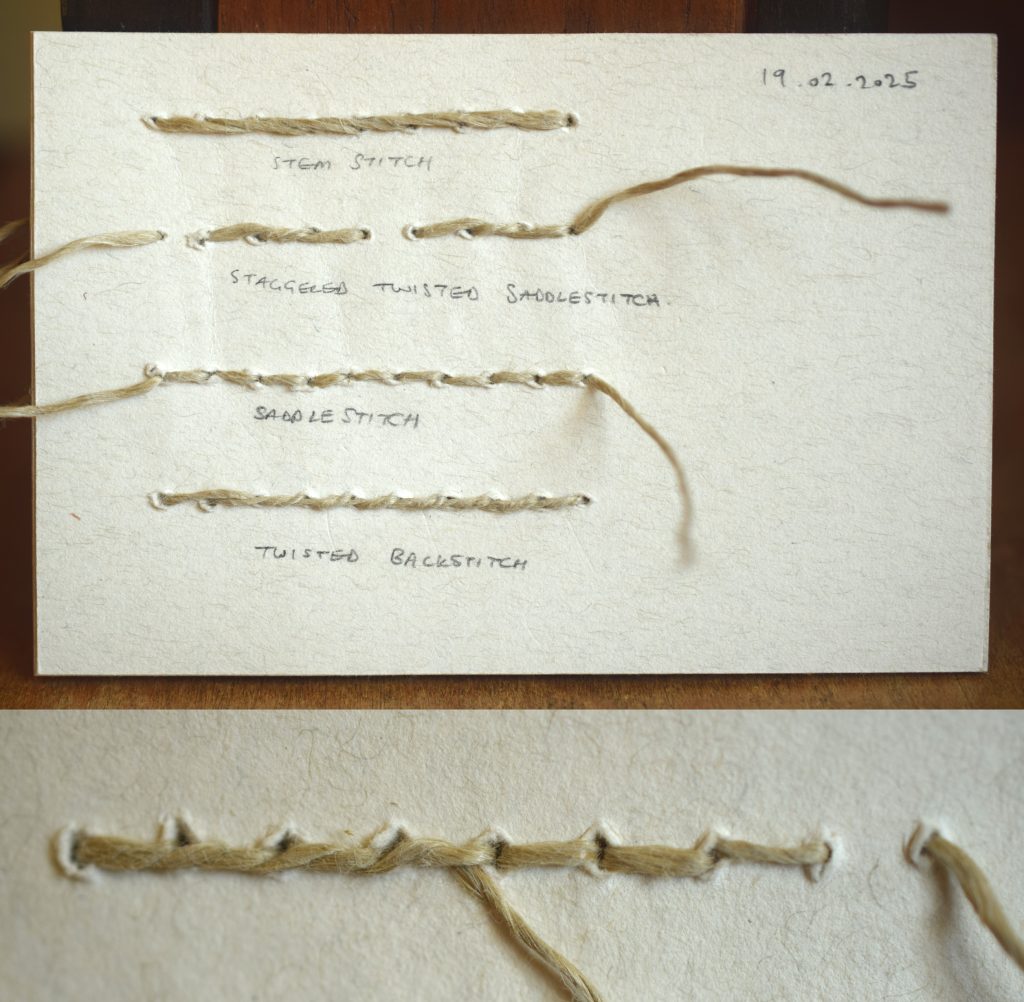
Next, I made a mock-up to test the sewing pattern. I began by putting together a quick ‘stub’ textblock, using paper rather than parchment, shortened so as not to waste material when my focus was on the tab section of the construction. Then, I punched a series of sewing holes through a stack of ten pre-shaped pages with a sharp awl. Initially, we had assumed that the tab had been sewn together using a single piece of thread. However, while making this model, I found that the only way to achieve the position of the knots seen on PL 1662 was by first sewing the central line down the tab, and then sewing around the border with a new length of thread. This makes sense from a crafting perspective, as you effectively tack the pages in place with the single line of sewing, which holds everything still while you work on the border.
By far the most complex part of using PL 1662 as a template was the difficulty in interpreting the lacing on the leather tab at the top of the bound section of the manuscript. Described, all too accurately, by J.P. Gumbert as a “complex lump of various pieces of leather,”[3] the tab is a haphazard construction that defies replication. It’s formed of three layers of leather, with the parchment body of the manuscript sandwiched between them, sewn together with a strip of alum tawed skin that merrily winds around the structure, deftly avoiding any identifiable pattern.
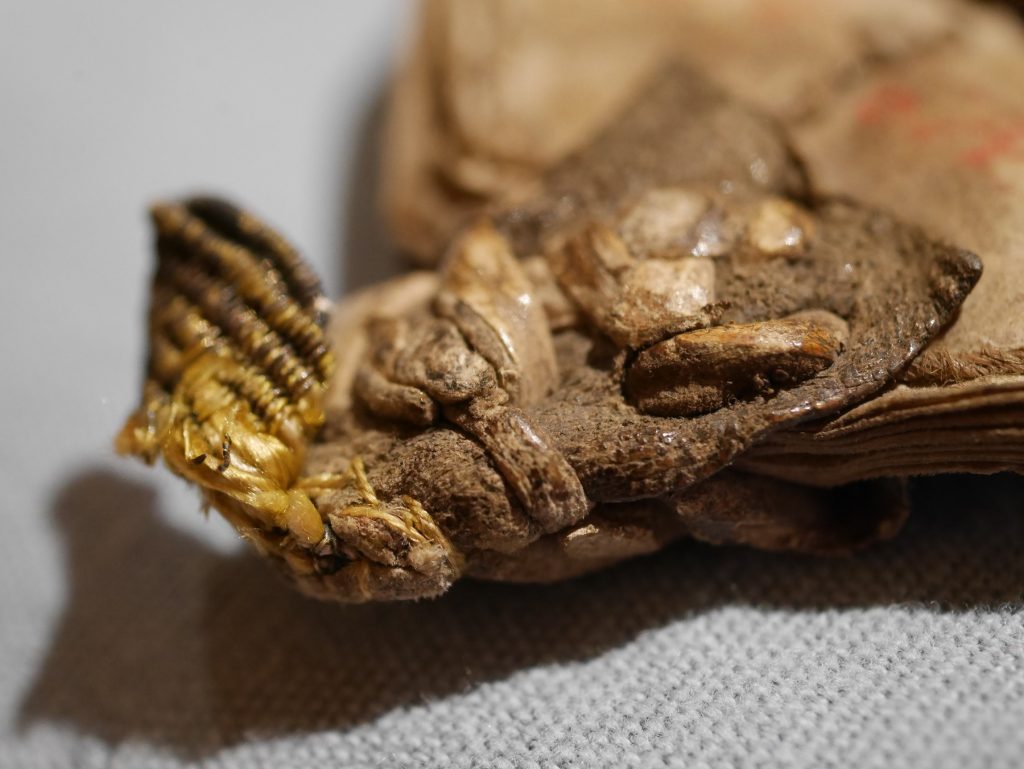
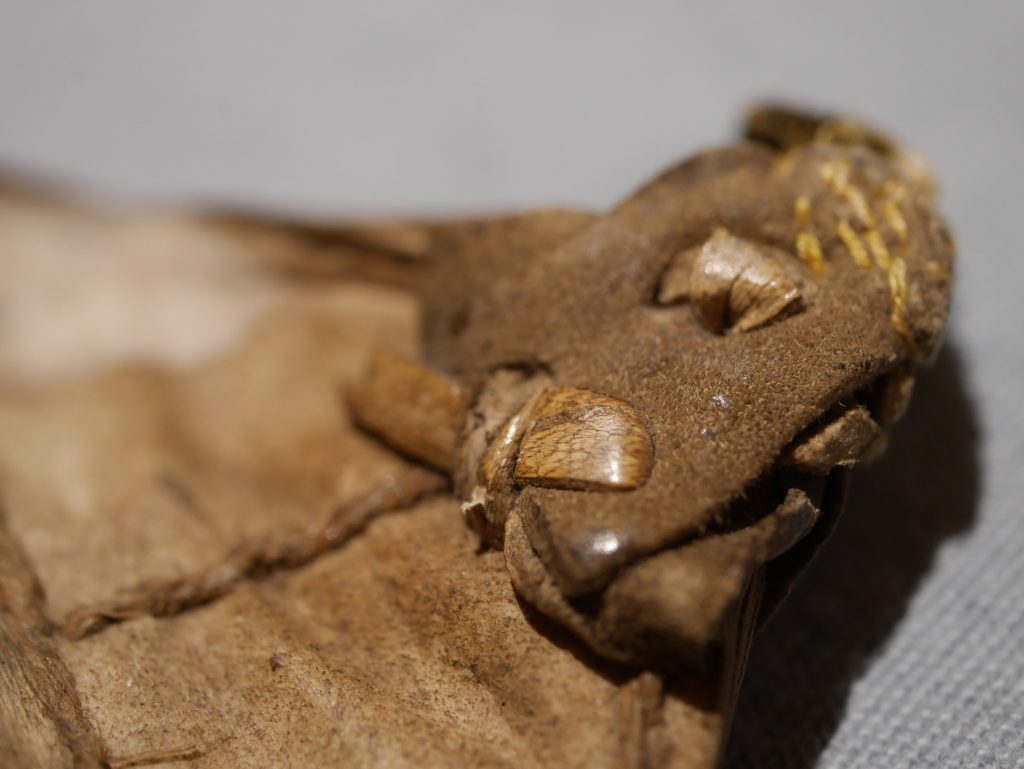
The ends of lacing seen on one side of the leather tab don’t match up with the lacing seen on the other side, so recreating the exact sewing route involved a fair bit of experimentation and, failing that, educated guesses. It was a fun puzzle to tease apart, and one solved predominantly through a series of incrementally evolving mock-up models and a great deal of staring obsessively at photographs.
In the end, I created a triple layer of Melinex (a transparent polyester film), drawing on the shapes of the leather pieces and the locations of known elements, and punching holes in the places that holes definitely existed. Then I used a piece of thread to represent the alum tawed skin, and bridged the gaps in a way that might be logical to a medieval craftsperson making a “complex lump”.
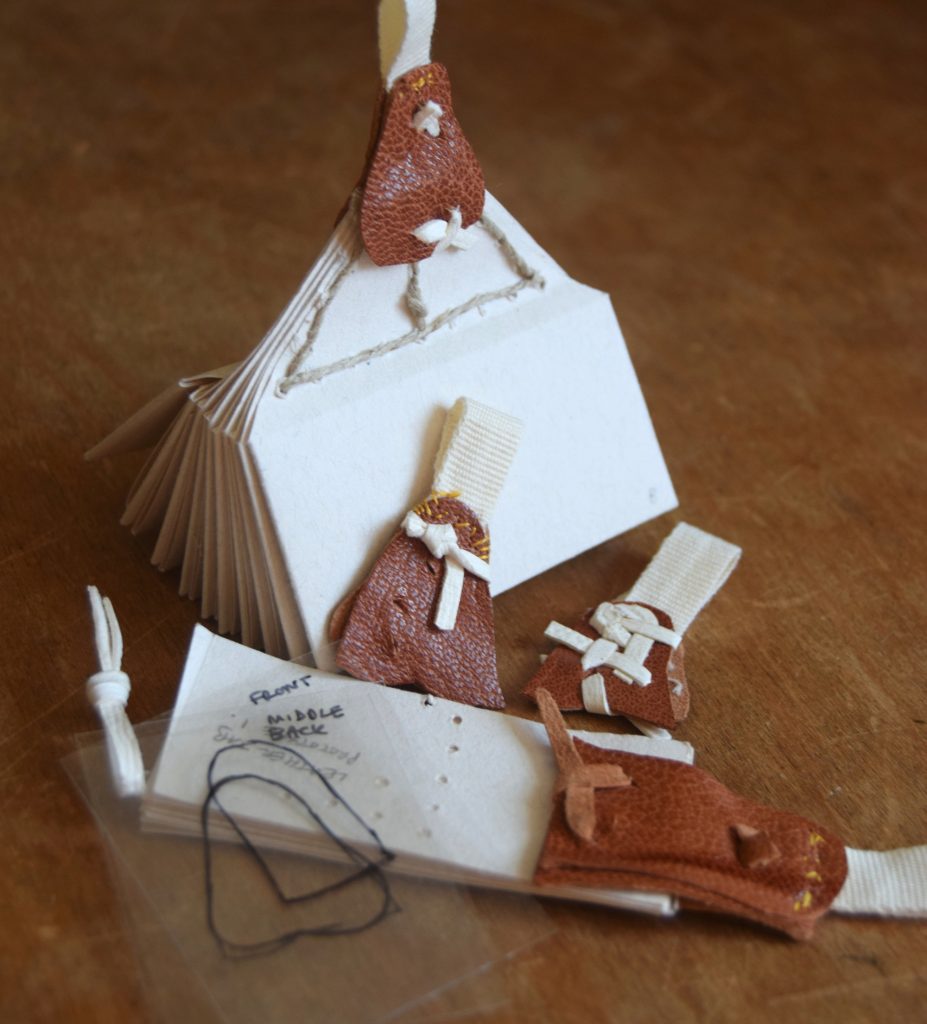
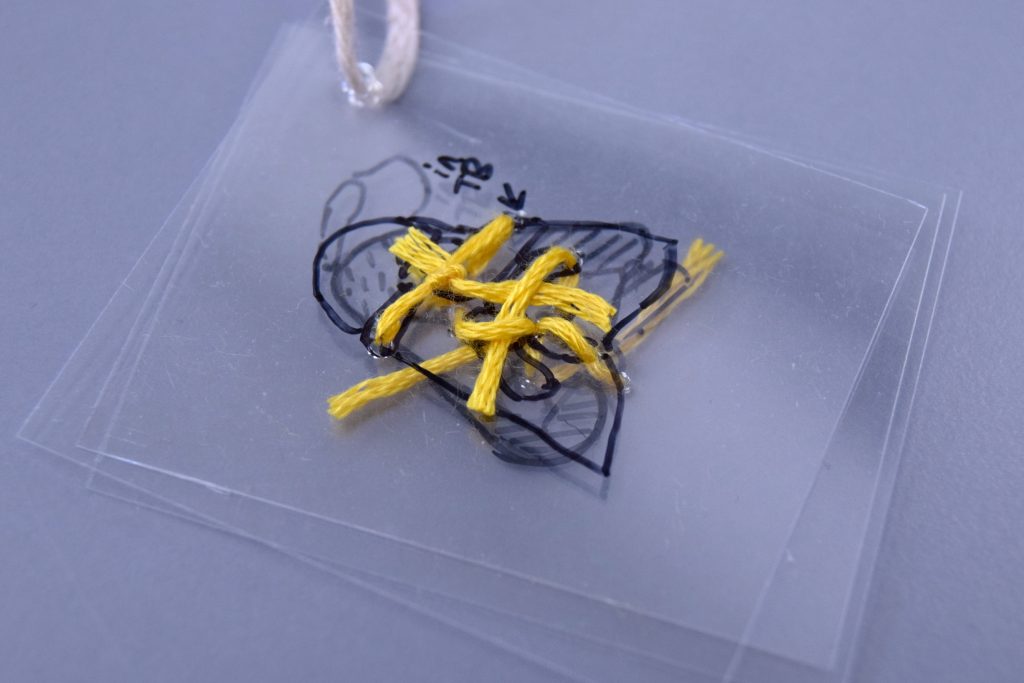
I made one final mock-up, forgoing the pages entirely and just recreating the tab section, using some leftover parchment scraps. Here, I ran into a problem. On my previous models, I’d used a sharp awl to punch right through all ten layers of paper to create sewing holes. Parchment, however, is made of sterner stuff. With the helpful advice of a number of other conservators in the room, I tried: three different awls, a Japanese screw punch, an auger, and an electric drill (this last option with the accompanying wisdom that if the medieval maker had had one, they’d have used it).
Ironically, my first tool, the sharp awl, worked the best, albeit with some modifications to the amount of force applied. The process was further improved when it dawned on me that the holes could be made one sheet at a time, rather than struggling to punch through ten at once. Finally, I mimicked the textile loop at the very end of the leather tab with a piece of cotton ‘tying tape’ of roughly the correct dimensions, and sewed it on with a yellow silk thread to mimic PL 1662.
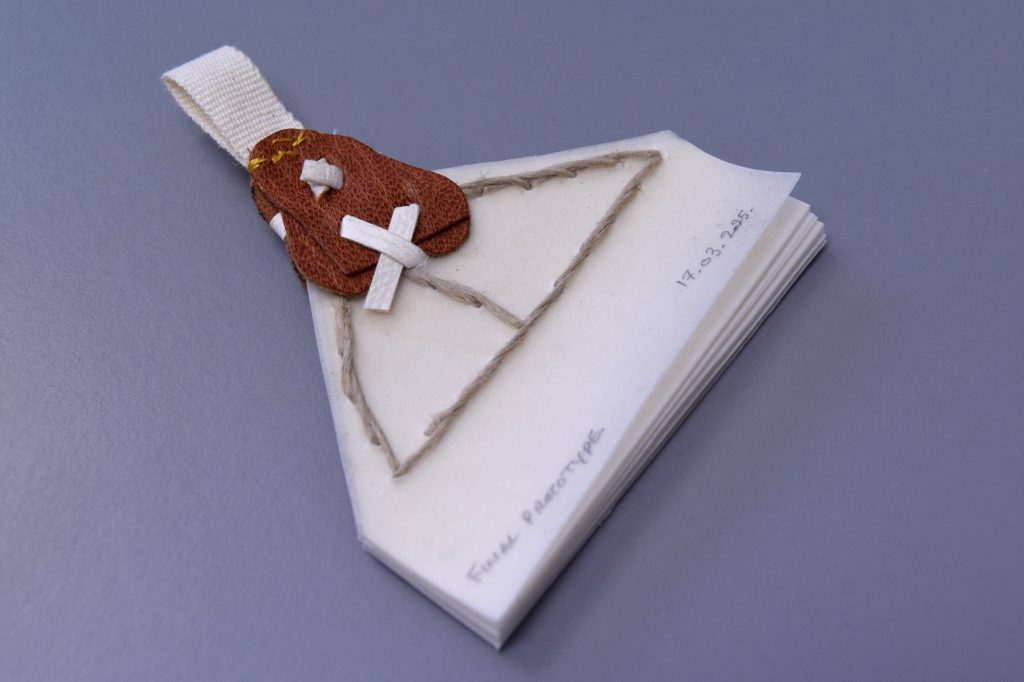
At this point, surrounded by scraps of leather, parchment, and twine, I felt satisfied that I could embark on making the real thing!
Making the manuscript: The final model
After making so many paper models, working with the parchment that Deborah had prepared was slightly daunting, but also exciting. Having had quite a lot of practice with what I was doing at this point, the making process was relatively quick. I started by shaping the top of the parchment pages to form the section that would become the tab joining them together. Then, with the aid of a template, I punched in the initial sewing holes with my trusty awl. I used a piece of unbleached linen thread, lightly waxed to make it easier to pull through the stack of pages, and stitched the pages together with the stem-stitch method I’d chosen earlier.
With the parchment sewn, I began work on the leather part of the tab. At first, I used a scrap of book-weight leather, which is rather thin and flexible and wasn’t quite giving the same visual effect as the tab on the original piece. It felt flimsy, and moved around a lot on the textblock, which was not ideal for an object that needed to be used. I removed it, and replaced it with a thicker leather version, which looked far more like the original manuscript, and provided a sturdier result that would be easier to handle. I used my Melinex model to guide the sewing through the leather tab, using a length of alum tawed skin as a thread. With that, the model of the folded manuscript was complete!
Adapting the model for use: Practicality vs. faithful reproduction
Dr James Freeman, curator of Curious Cures, will use the bat book model during tours and demonstrations. Talking to him about how he wanted the model to function, we realised that it would need to be worn around the waist. It also needed something to prevent the new parchment from fanning out wildly when suspended. Here I departed from the form of the original folding manuscript, choosing instead to focus on its functionality as a demonstration object.
For the waist tie I made a very simple rope from twisted conservation cord, which had the advantage of being adjustable in size and was also delightfully medieval in aesthetic. However, having made the rope and threaded the model onto it, it quickly became apparent that the springy parchment pages weren’t going to behave themselves without something to keep them closed. On PL 1662, the manuscript is housed in a moulded leather slip case, with an opening at the head. However, this design would be difficult to manipulate during demonstrations, and would also require a full study of its own.
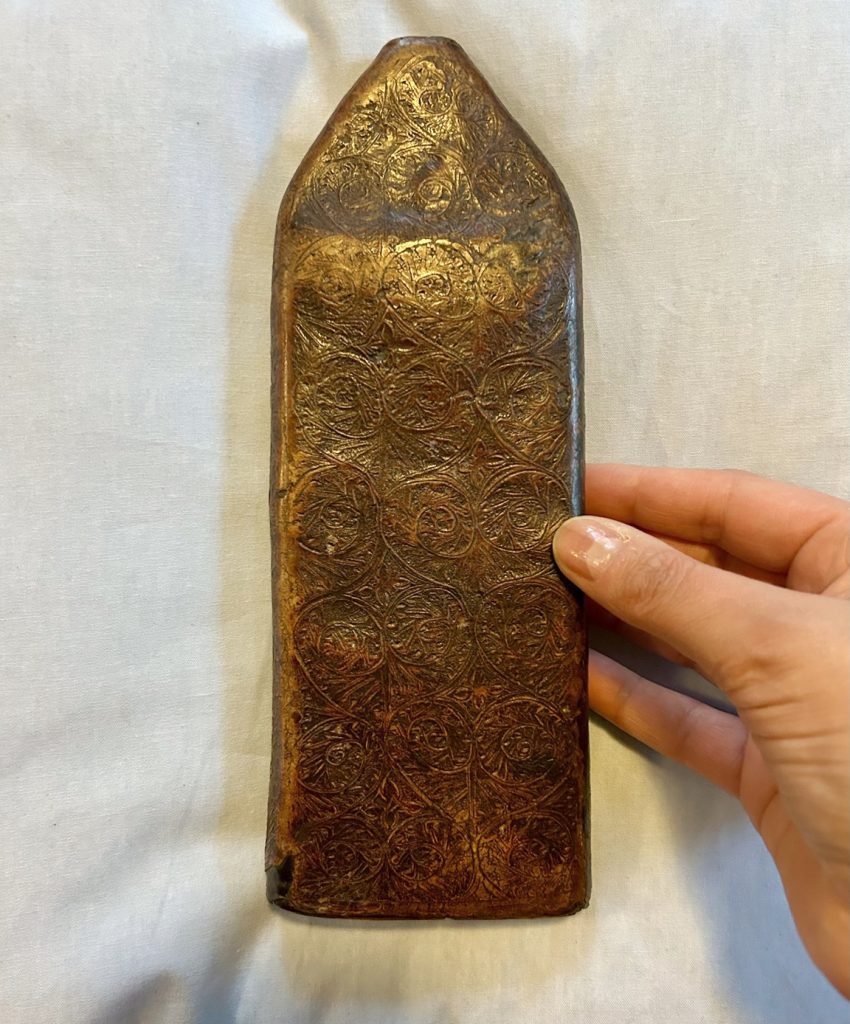
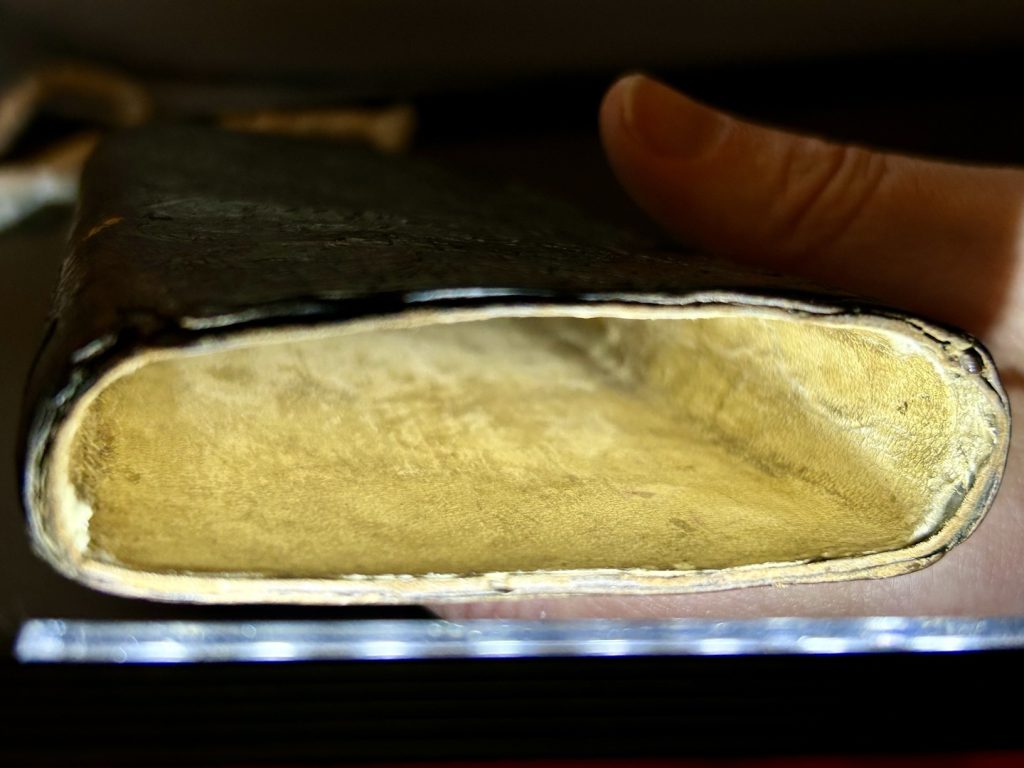
As a compromise, I elected to make something quick and practical that would suit the look of the manuscript, keep it contained while not in use, and be easy to remove during a demonstration. A simple leather pouch, that could be slipped on and off of the model while leaving the manuscript itself tied about the waist, seemed the most practical option. I made the pouch from brown goatskin and lined it with a very smooth paper to prevent pieces of leather from the inside of the skin becoming attached to the suedey parchment. The whole thing was sewn together with linen thread. With the addition of the pouch and the rope, the model could now fulfil its destiny as a stylish addition to any medieval physician’s, or curator’s, toolkit.
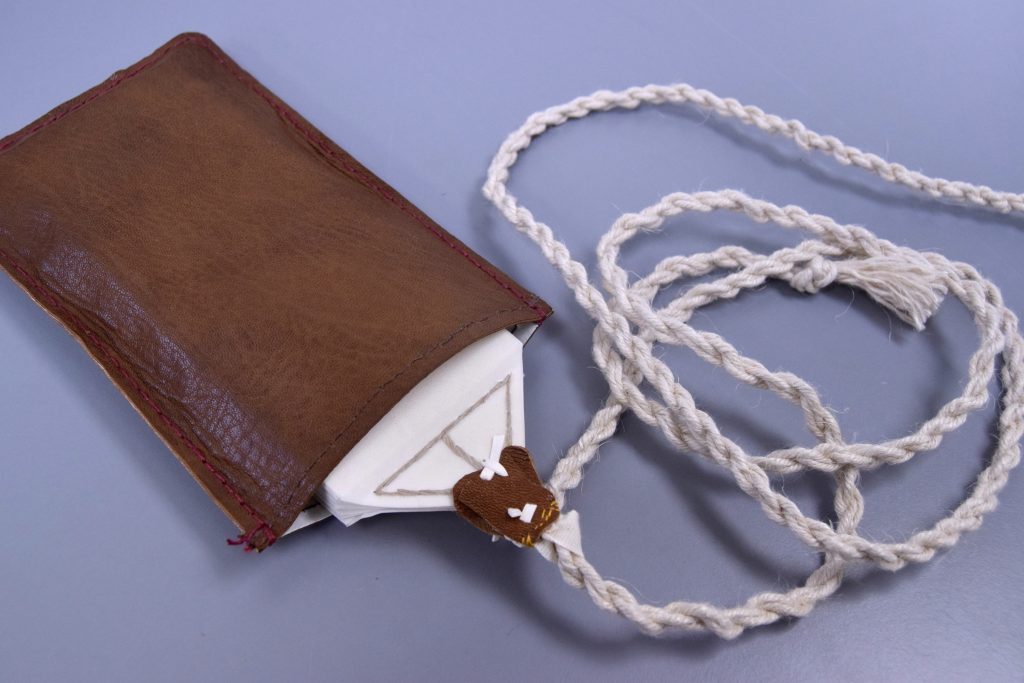
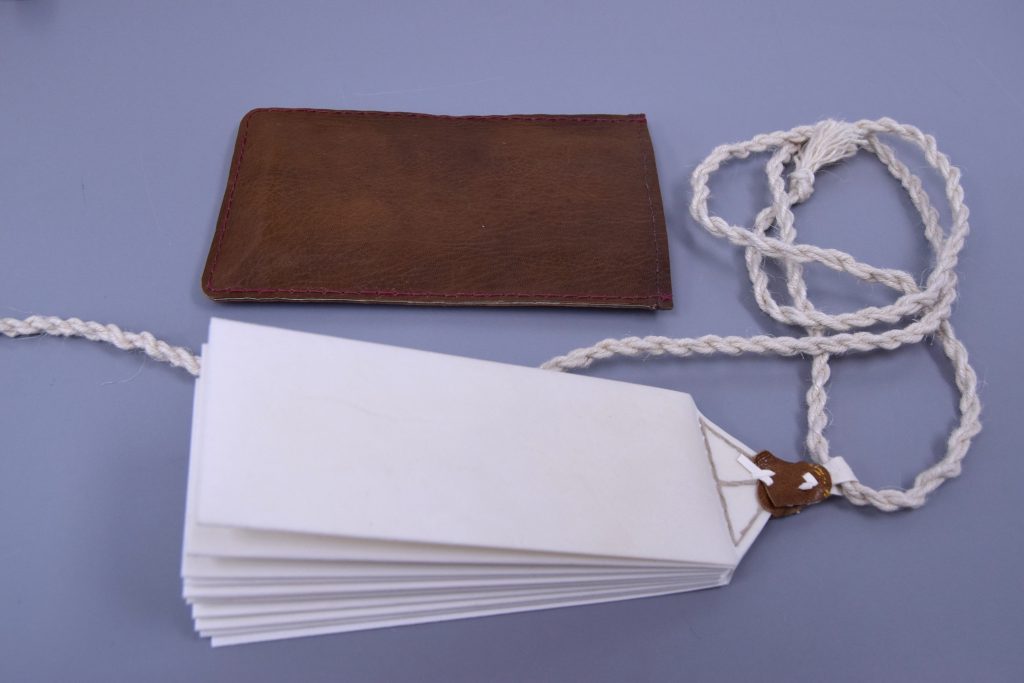
References
Gumbert, J.P. Bat Books: A Catalogue of Folded Manuscripts Containing Almanacs or Other Texts (Bibliogia 41: Elementa ad librorum studia pertinentia). Brepols Publishers, 2016.
Royal School of Needlework Stitch Bank. “Stem Stitch.” Accessed 2 April, 2025. Available online.
Acknowledgments
Thank you to the Pepys Library, Magdalene College, Cambridge, for facilitating access to their manuscript and for allowing the use of images of it in this blog post. Thank you also to Deborah Farndell, Kristine Rose-Beers, and Shaun Thompson for their photographs of PL 1662, and for all of the feedback and advice on the model-making process. A huge and ecstatic thank you to the entire CUL conservation team for being consistently knowledgeable, welcoming, and delightful to work with.
[1] J.P. Gumbert, Bat Books: A Catalogue of Folded Manuscripts Containing Almanacs or Other Texts (Brepols Publishers, 2016), 171.
[2] For further information on stem stitch, see the Royal School of Needlework’s Stitch Bank: https://rsnstitchbank.org/stitch/stem-stitch (Accessed 2. April 2025)
[3] Gumbert, Bat Books, 171.

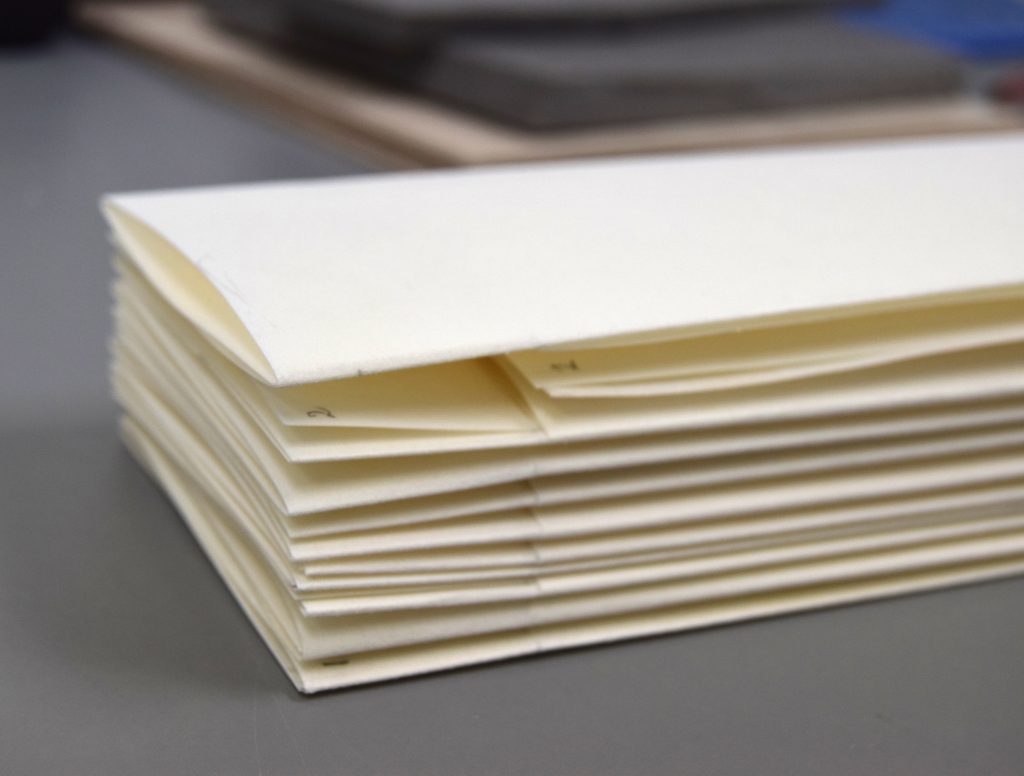
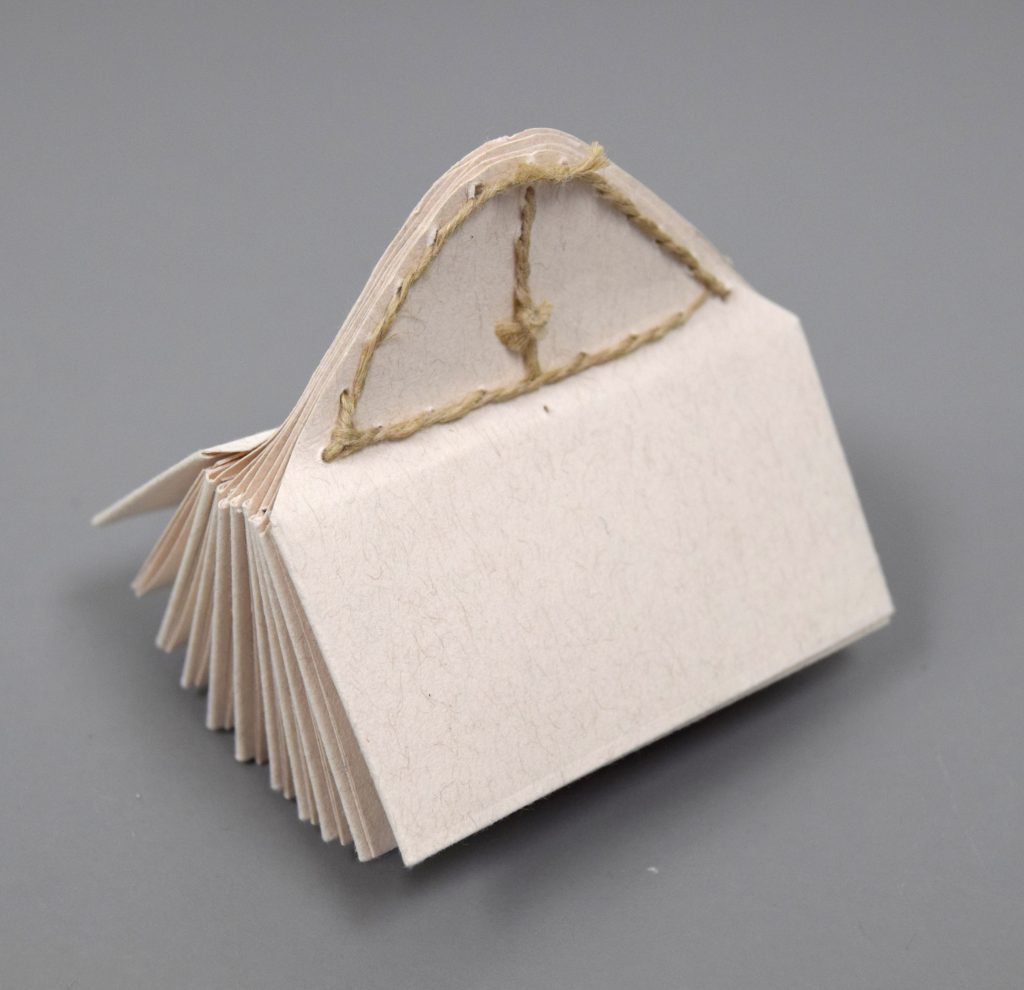
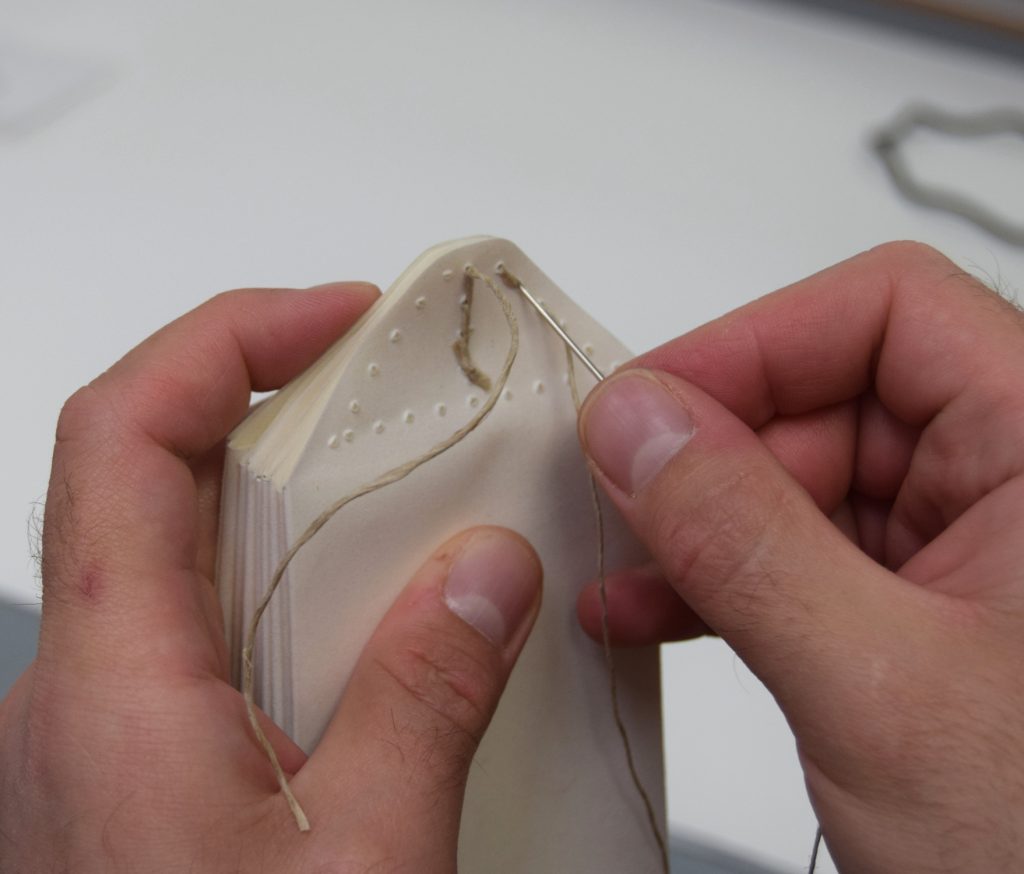
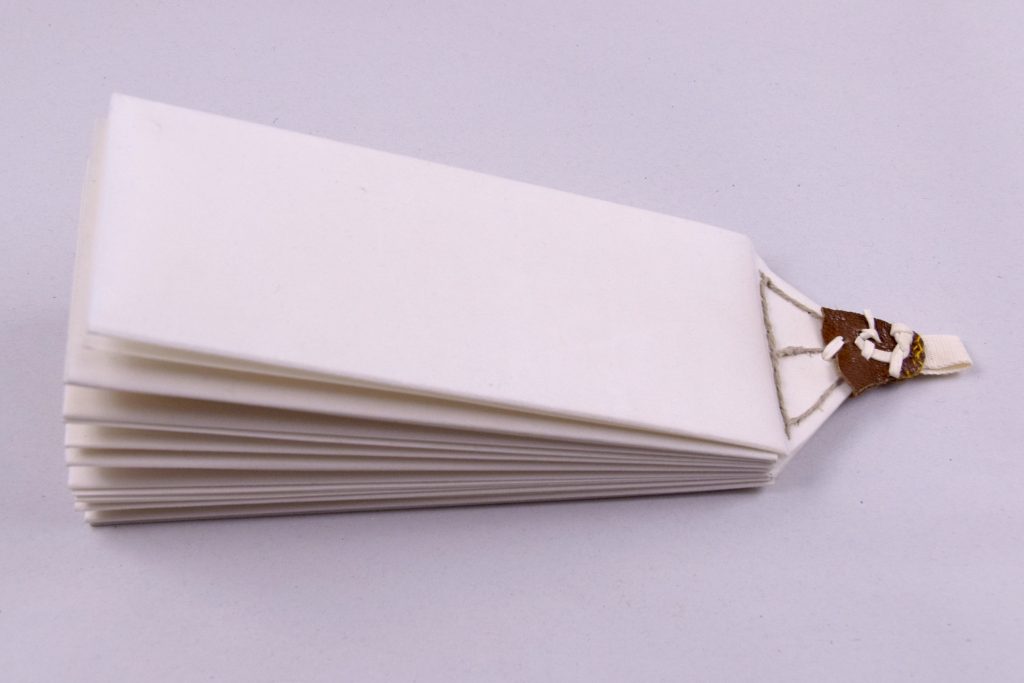
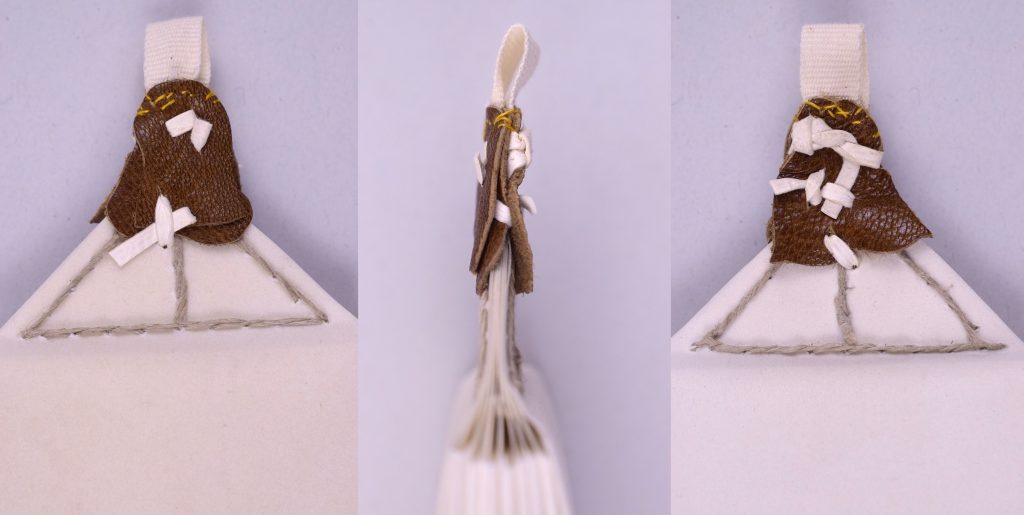
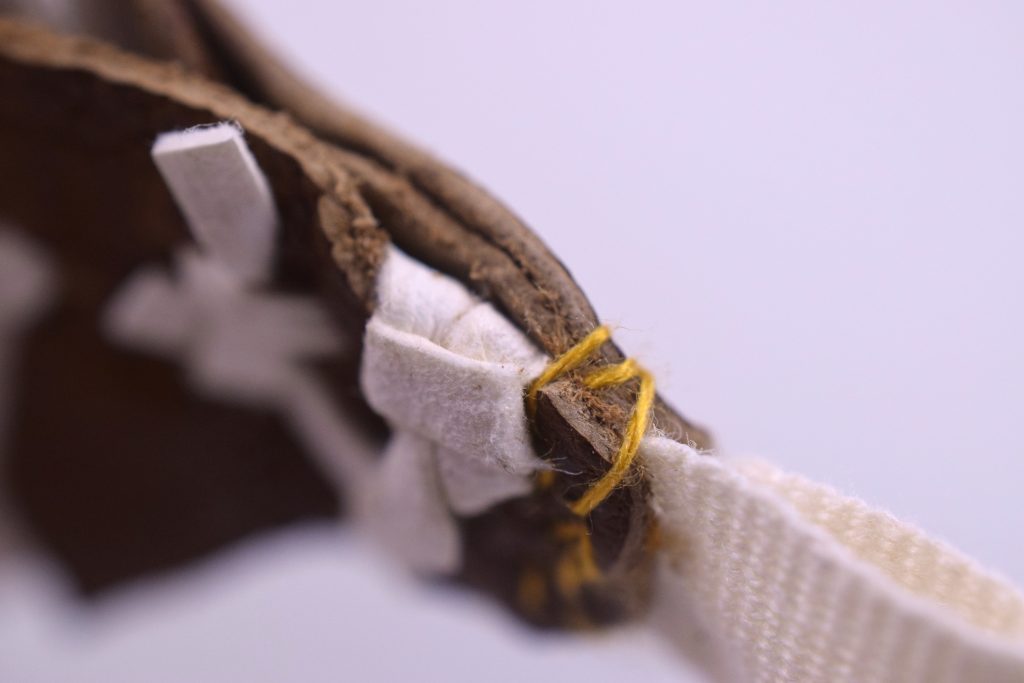
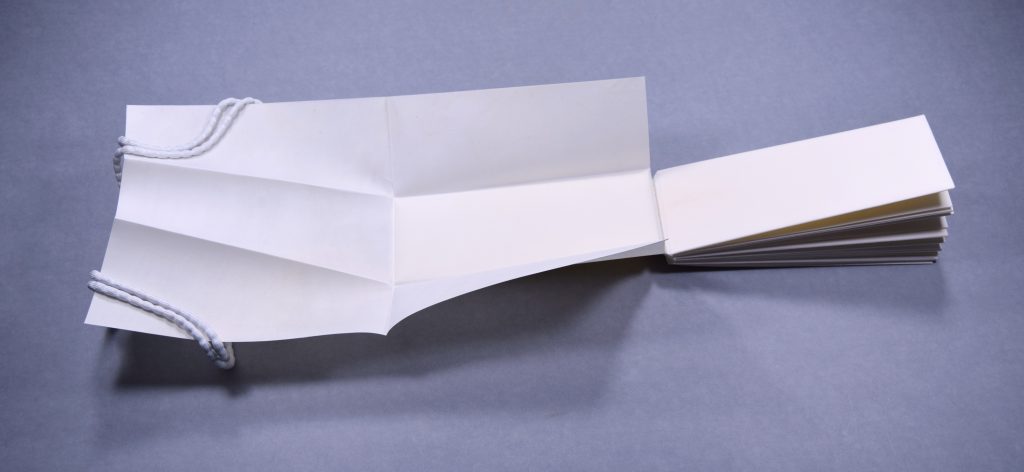
It’s fascinating how a single surviving page can open a window into medieval medical practice. The decision to reconstruct a folded manuscript model is such a smart way to make that history tangible for visitors.